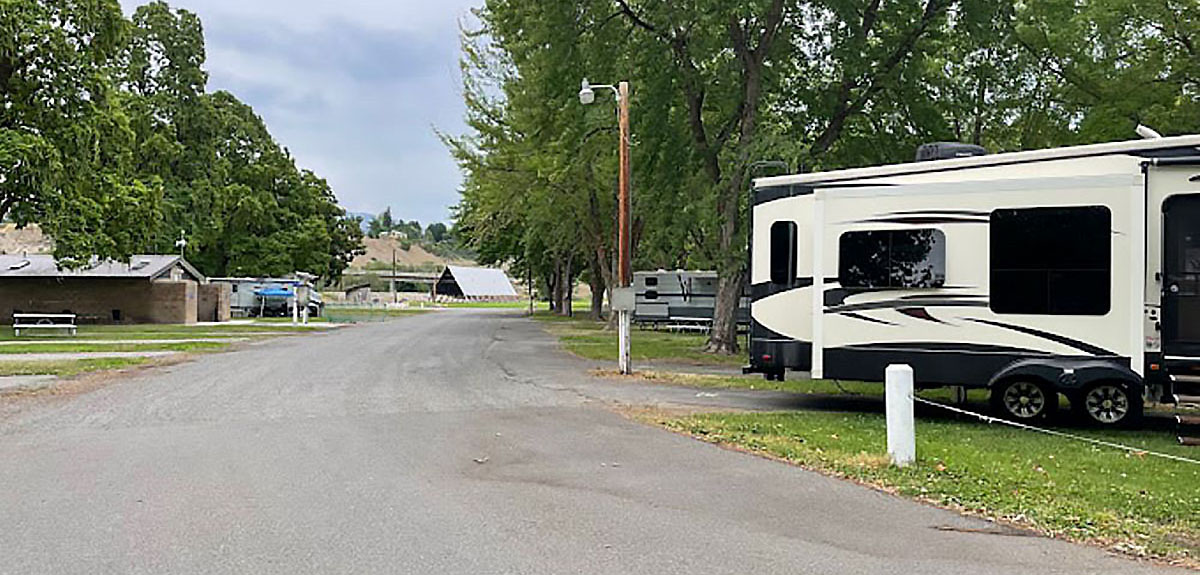How to Get Fit Outdoors When It’s Cold
Don't let those cold winter months negatively impact your fitness.
Image Caption: Photo Credit: fotofrankyat/Getty
There’s nothing quite like getting outdoors for a hike, bike ride, run, or any other form of exercise in the summer. The sun’s shining, the sky is a bright and a cloudless blue. The daylight seems to go on forever.
And then, before you know it, winter comes. A dull overcast gray sky replaces the ubiquitous sunshine. Snow and freezing temps make themselves at home where there was once warmth and clear skies. Plus, a blanket of darkness starts arriving in the afternoon. All of this can make working out outdoors at the very least a challenge and, at the most, feel insurmountable. But, with a few quick tips, changes, and steps, getting fit outdoors when it’s cold won’t be quite the challenge you think.
Here are just a few activities that make exploring in the cold a lot of fun:
–snowmobiling
–snow biking
–ice skating
–ice fishing
–snowshoeing
–skiing and snowboarding
An RV makes the perfect winter adventure basecamp. Learn how to get outside despite the cold with these tips for staying warm and safe.
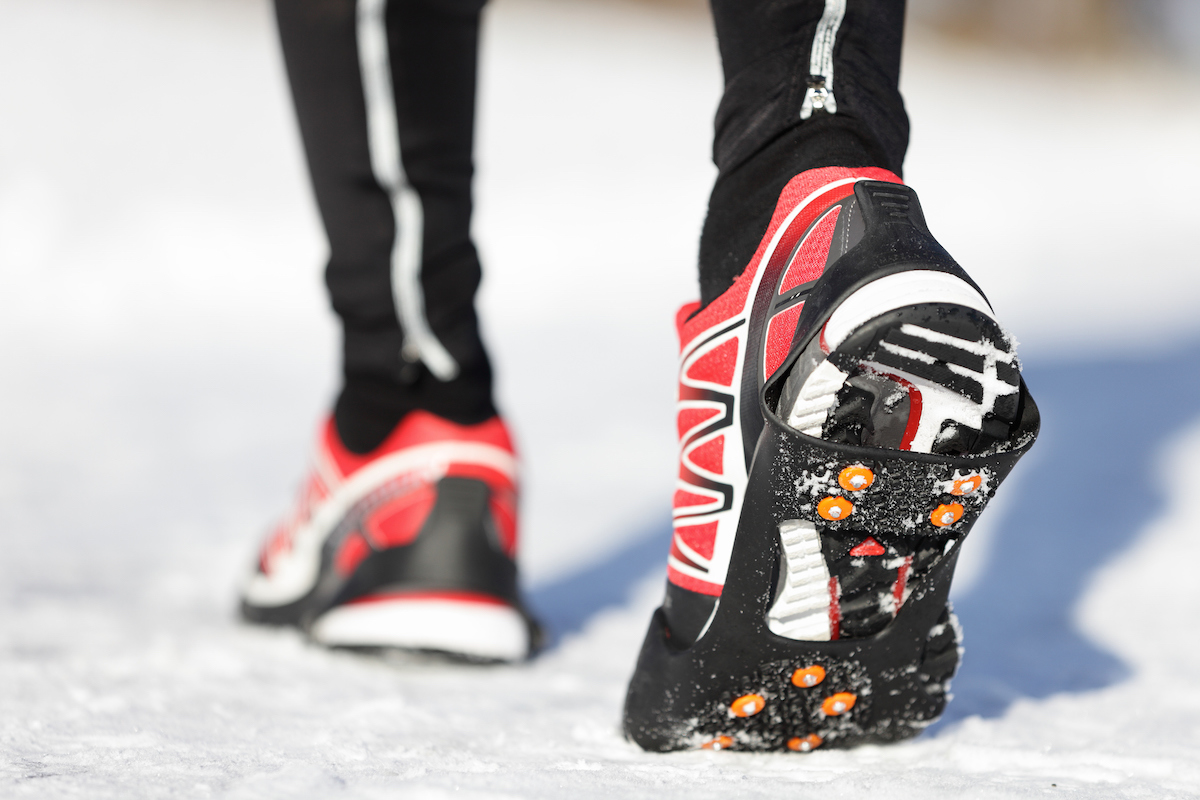
Photo Credit: Maridav/Getty
Get the Right Gear
When it comes to working out in the cold, think about what it was like leaving for school as a kid in the middle of winter. Your mom probably made you wear a hat, gloves, and something to protect your neck. Well, mom was right. When working out in the cold, you need to protect your extremities; they’re most prone to heat loss being the farthest from the blood-pumping source–your heart. So, pick up a cold-weather hat, gloves, even a gaiter depending on the temps. And, you’ll also want to invest in a good pair of wool socks.
You’ll also want to make sure the shoes you’re wearing are waterproof. Most running shoes aren’t because manufacturers design them to be breathable for warm weather running. But, in the winter, the last thing you want is a pair of shoes that let moisture to reach your toes. A pair of running shoes with a Gore-tex liner will help avoid that. If you don’t have room or the budget for a pair of winter exercise shoes, opt for a waterproof gaiter instead. And if cycling is your expertise of choice, invest in some shoe covers to help you stay warm (and dry) on your workout from head to toe.
And, speaking of early darkness–it can get dark in the winter as early as 4 pm. Make sure to get reflective gear in bright colors and wear a headlamp too. You want to be visible no matter if you’re running in your neighborhood or hiking in a national park.
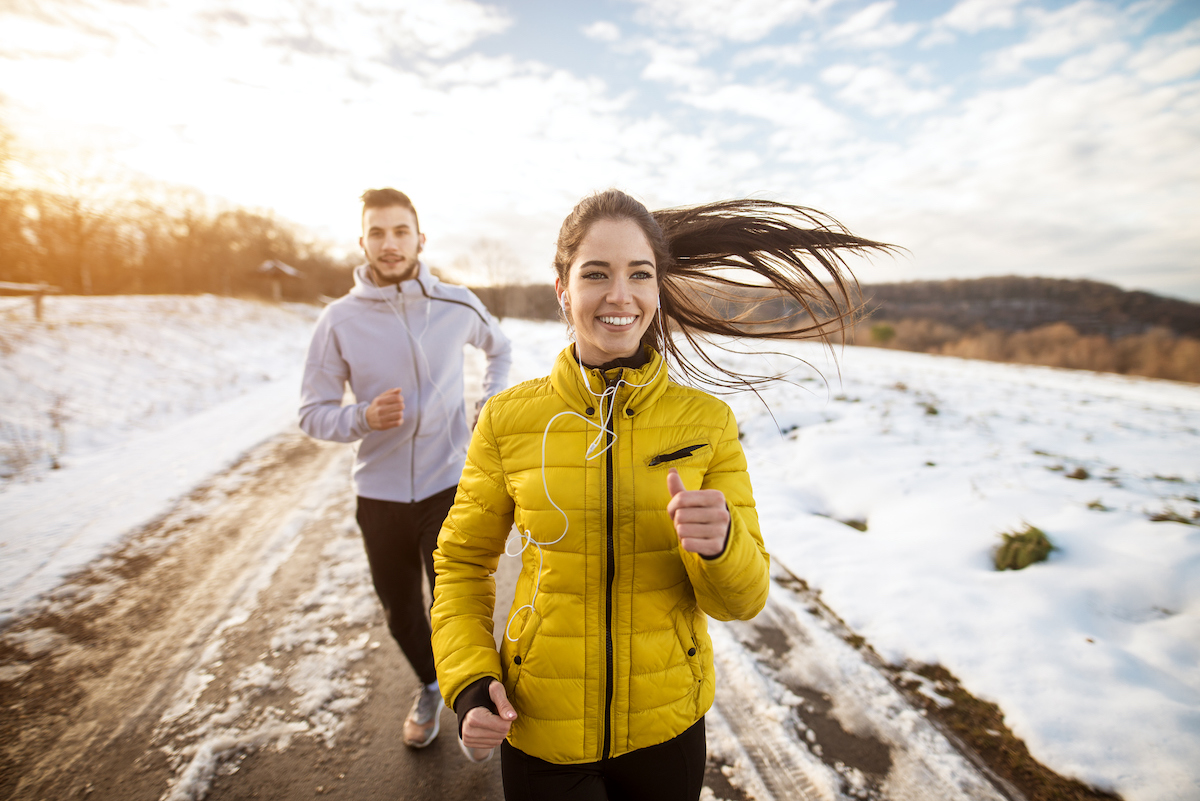
Photo Credit: dusanpetkovic/Getty
Dress Dry and Wear Layers
Being cold is uncomfortable. Being cold and wet is worse. That’s because water is great at transferring heat from your body to the air. So, when you’re working out in the cold, you’ll want to make sure you stay as dry as possible. To do this, opt for clothing made from moisture-wicking fabrics that dry quickly, and skip fabrics that don’t, like those made from cotton.
On the topic of what to wear, how much you wear is also important. Layering up traps warm air next to your body and helps prevent rain, snow, and wind, from coming in. When it comes to layering, make sure to first put on a thin base layer from synthetic fabrics. Then add an outer layer, an insulated jacket, to protect you from the elements. If it’s extremely cold you can even throw in a middle layer, like a fleece or light pullover for added warmth. As you begin and go through your workout, you will warm up, so shed layers as needed to maintain a comfortable temperature.
Pro Tip: It can be difficult to determine how warm to dress, but a good rule of thumb is to dress 10 to 15º warmer than the actual temperature to account for heating up from your exercise. You might start out feeling a little chilly but by the time you hit your stride, you’ll feel perfectly comfortable.
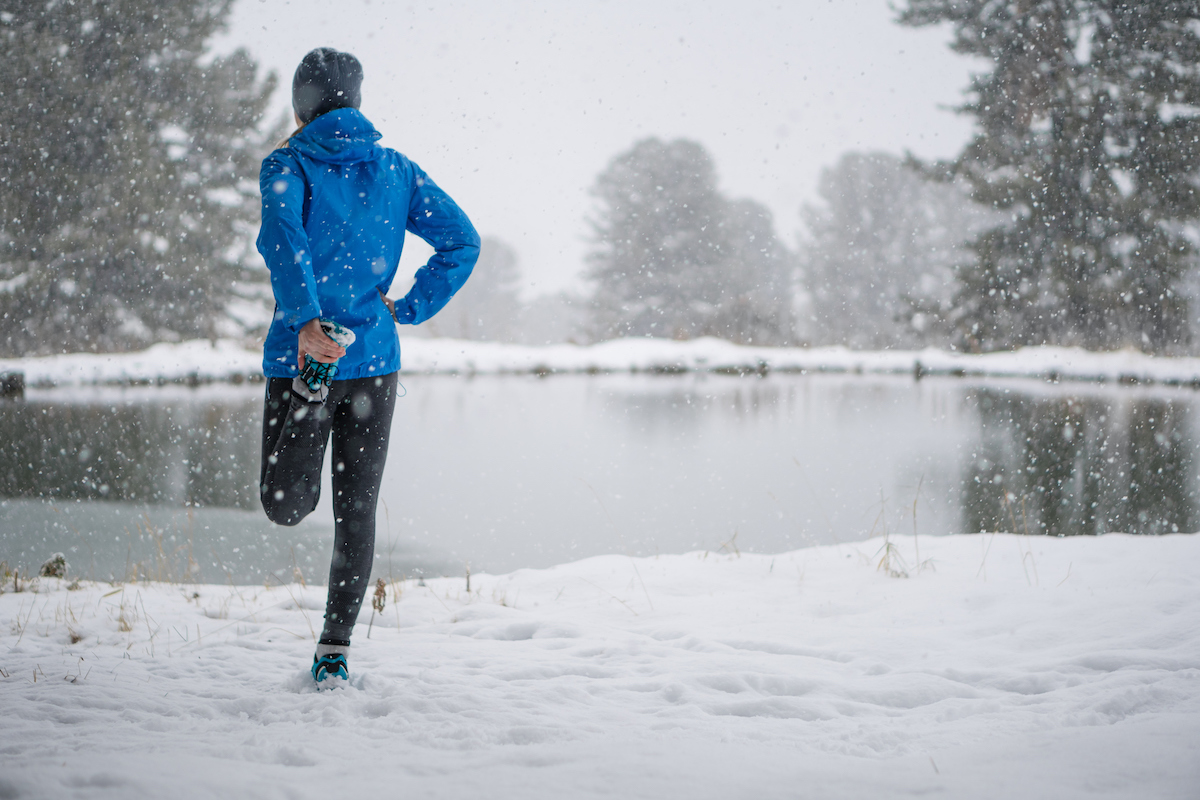
Photo Credit: Lifemoment/Getty
Do a Warmup and Face the Wind
What better way to prepare for working out in the cold than by doing something with the word “warm” in the name? A warmup is an important step to take before a workout, but especially so before one in the cold. That’s because if you’re cold, so are your muscles, and taking them from inactive to active without warming them up can lead to injuries like snaps, pulls, and tears.
Make sure to do some dynamic stretching before your workout. The stretching you do should include low-intensity movements similar to the movements you’ll be doing in your exercise. Doing this increases blood flow and temperature in your muscles which helps decrease the risk of sustaining an injury.
If you’re stiff from a long day on the road, try these yoga stretches for long driving days.
And, if you’re staying fit with activity on a route, like running, cycling, or skiing, make sure to begin by heading into the wind. That way, on your way back, when you’re fighting fatigue, sweat, and cold you aren’t also fighting the wind and the wind chill. This will greatly reduce any chance of developing hypothermia and keep you safe and motivated throughout the entire workout.
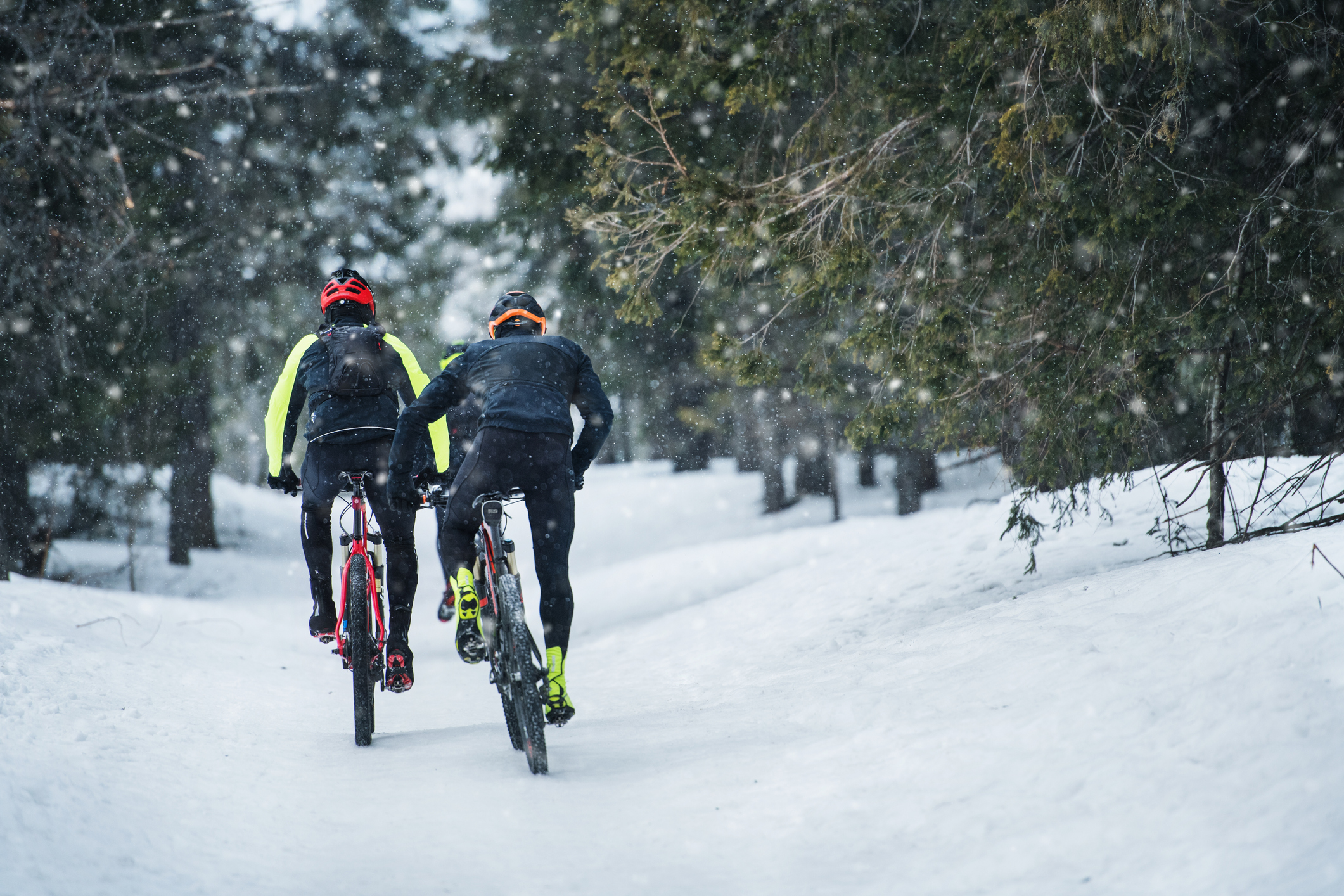
Photo Credit: Halfpoint/Getty
Don’t Throw Out All Your Summer Tasks
Just because it’s a different season doesn’t mean all the steps you’d take to prepare for working out in the summer go out the window. Some of these steps are just as valuable, if not more so, in the winter. For example, it’s just as important to stay hydrated when working out in the cold. This is especially important to consider as you might not find yourself feeling as thirsty during an outdoor winter workout. But, your body still needs rehydration, and with dryer air and high altitudes your skin will too.
The dry winter air can cause your skin to dry out and crack. Protect it by rubbing some Vaseline to high-risk areas like around your nostrils and ears. Also, make sure to apply sunscreen with an SPF of at least 30 to your face and skin and a lip balm. Protect your eyes with sunglasses.
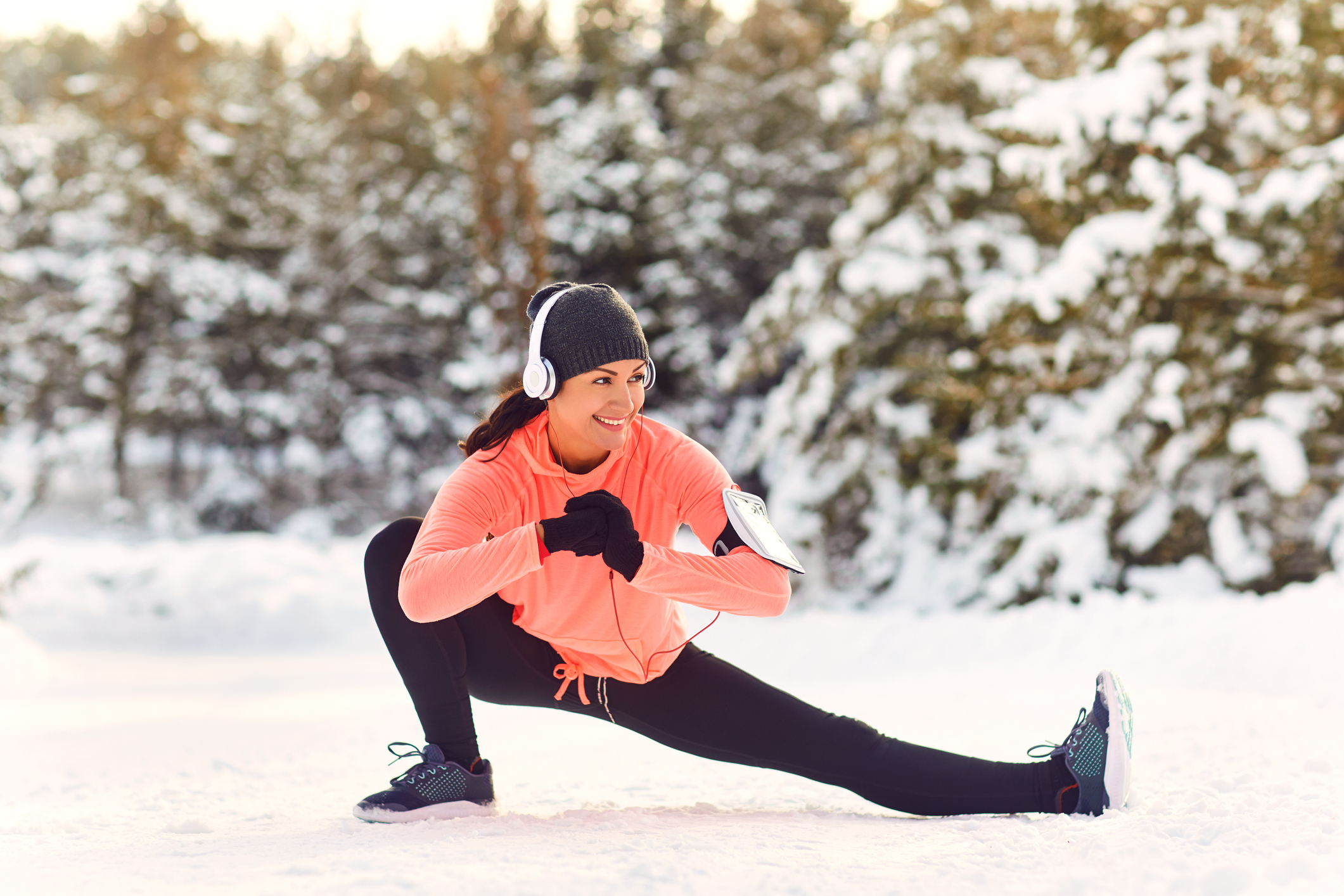
Photo Credit: Lacheev/Getty
Cool Down and Change Out of Wet Clothes
After you’ve completed your workout, you’ll also want to do a cool down. This helps reduce the chances of muscle soreness and reduces stress on your heart. Gradually reduce the intensity of your workout for ten minutes until you feel your heart rate normalize, then repeat your warmup and throw in some static stretching as well.
Once you’re finished with your cool down, get inside and get out of those damp workout clothes. Take a warm shower, and change into dry, clean clothes and crank up the RV’s furnace or portable space heater. You’ll feel warm in no time and a sense of accomplishment for not letting a little, or a lot, of cold weather keep you from getting out and enjoying a workout in nature.
Because, despite the sometimes gray sky and early darkness, there is a lot of beauty in nature and winter camping in the snow can be a lot of fun. Don’t let winter go to waste. Get out and enjoy it.




